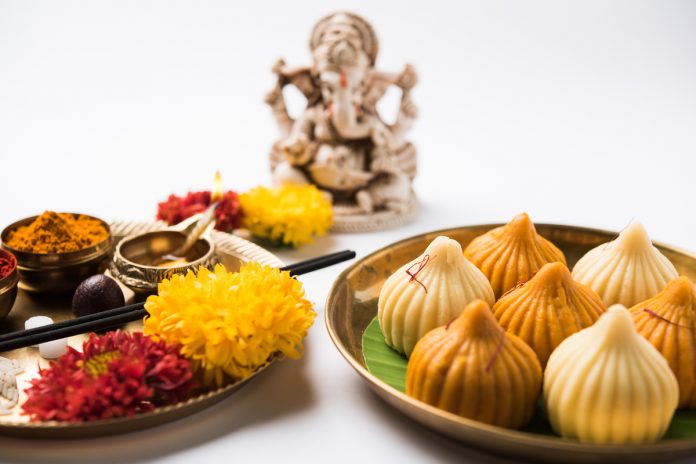Today we look back at a sweet story. The origin of the humble but oh-so-yum modak.
Hindu mythology reveals why it was offered to lord Ganesha. This delectable sweet has made certain that we look forward to mouthwatering treats as happily as we welcome Ganpati to give us his blessings this Ganeshostav.
Tomorrow is Lord Ganesha’s birthday, and those of us who celebrate it, already know that his favourite sweet is the modak.
Call it a modak, kudumu, kadubu or kozhukattai, the steamed dumpling is delicious.
Ganesha is popularly known as the God of wisdom, but did you know that the modaks by virtue of offering it to this benevolent God symbolise little nuggets of wisdom?
Such has been his love for the sweet that Ganesha is always seen pictured with a modak or a platter of modaks beside him.
Modaks are a pan- India Prasad to Lord Ganesh. In Marathi, it is known as modakam or kudumu in Telugu, kadubu in Kannada, kozhakatta in Malayalam and kozhukattai in Tamil.
The two ways in which modaks are made
In some instances, people use wheat flour but typically rice flour is used.
Two ways to cook them include steaming (ukadiche modak) and frying (talalele modak).
While the fried version gives them a crunchy texture, steamed modaks are soft, luscious and ideally enjoyed with a drizzle of warm ghee or mildly sweetened coconut milk.
The traditional modak filling is made using fresh grated coconut and sugar or jaggery, along with nuts, raisins and a pinch of cardamom. This mixture is cooked together till it’s a perfect balance of moist and dry. It is cooled and filled into the rice dough balls before being shaped into the customary onion bulb.
Fried or steamed, modak prasad is then offered to Lord Ganesh in heaps of 21 modaks.
Contemporary cooks have taken the modak to a fantasy land of creations. Modaks are 21st century and trending. Their fillings could be anything from nutella, khoya, chana dal, dark chocolate, fruit puree gels, raspberry, white chocolate ganache and even pistachio marzipan to name a few.
However, the traditional version is still the go-to recipe for Ganpati Bappa’s birthday.
In tune with our healthy eating vibe, we share the recipe for dark chocolate modak – a popular modern twist to the original. You could also omit the dark chocolate and you will be left with the original modak recipe.
Trendy Dark Chocolate Modak
Ingredients
2 cups rice flour
1 cup grated coconut
¼ teaspoon powdered green cardamom (elaichi) – optional
1 teaspoon salt or to taste
2 cups crushed or powdered jaggery
100 gms of dark chocolate (over 55% cocoa) – grated
1 teaspoon virgin coconut or olive oil
Method
Dry roast the grated coconut and keep it aside.
Melt the jaggery in 2 cups of water and bring this to a boil.
When the jaggery syrup starts to thicken, add the roasted coconut, cardamom powder (if using) and dark chocolate.
Take off the fire when moist. Stir well and keep aside.
To Make The Dough
Add 2 cups of hot water slowly to the rice flour.
Stir in the oil and salt.
Stir well to mix and to ensure that there are no lumps.
Knead while warm to make a smooth dough.
Cover with a damp cloth and let rest for an hour.
Break off small pieces and shape into small cups and add a spoonful of the coconut-jaggery filling and chocolate.
You can shape them in a modak press or by hand.
Steam them till done.
Serve hot drizzled with hot chocolate sauce or coconut cream









